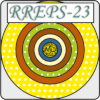Speaker
Description
Generation of energetic electron-positron pairs using multi-petawatt (PW) lasers has recently attracted increasing interest. However, some previous laser-driven positron beams have severe limitations in terms of energy spread, beam duration, density, and collimation. In this talk, we will show some novel schemes for the generation of dense ultra-short quasimonoenergetic positron bunches. By colliding a twisted laser pulse with a Gaussian laser pulse in near-critical-density (NCD) plasma, it is shown that, abundant γ-photons are first emitted via nonlinear Compton scattering of laser-driven electrons off the counter-propagating Gaussian lasers. Then copious number of positrons are subsequently generated during the headon collision of γ-photons with the Gaussian laser pulse. Due to the unique structure of the twisted laser pulse, the positrons generated are well confined by the radial electric fields of the drive pulse and experience phase-locked-acceleration by the longitudinal electric fields of the drive pulse. Three-dimensional particle-in-cell simulations demonstrate the generation of dense sub-femtosecond quasi-monoenergetic GeV positron bunches with tens of picocoulomb (pC) charge and extremely high brilliance above 10^14 /s/mm^2/mrad^2/eV. It is also shown that, the positron bunches generated can be also accelerated by terahertz waves. For example, abundant γ-photons and positrons can be generated during the collision of GeV electron beam and the scattering laser. Due to the strong longitudinal acceleration field and the transverse confining field of the emitted THz wave, the positrons can be efficiently accelerated to 800 MeV, with the peak beam brilliance of 2.26×10^12/s/mm^2mrad^2/eV. This can arouse potential research interests from PW-class laser facilities together with a GeV electron beamline.
